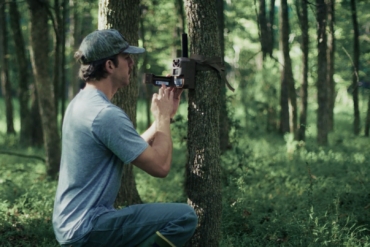Anytime you venture out into the wild, there’s a handful of essential items that should be in your backpack. Snacks, water, and extra layers make that list, but something that many people forget or take for granted is a reliable navigation tool.
Perhaps we’ve become too reliant on cellphones or simply lost the art of map and compass navigation. When it comes to wilderness travel and survival, a basic compass can’t be replaced. Reliable and intuitive, a map and compass should always make your wilderness packing list.
But before adding a map and compass to your gear list, learn how to use them properly.

Parts of a Compass
Compasses are relatively simple pieces of technology that have been around in some form for thousands of years. To properly use a modern compass, familiarize yourself with a few common parts.
Baseplate
All compasses are mounted on a baseplate. These should be transparent so you can see your map underneath. Additionally, the baseplate’s straight edge will assist in taking bearings to transfer to your map and navigate onward.
Direction-of-Travel Arrow
This arrow indicates where you need to point the compass when taking or following a bearing.
Rotating Bezel
The rotating bezel is the circular area marked with degrees from 0 to 360 and also known as the “azimuth ring.”
Index Line
The index line is found above the bezel and shows where to read bearings. It’s an extension of the direction of the travel arrow described above.
Magnetized Needle
Essential for navigation, the magnetized needle can be found inside the bezel and is usually red or white. This needle always points to magnetic north, not true north.
Orienting Arrow
This arrow allows you to orient the bezel with the map and is often designed to match the magnetized needle.
Orienting Lines
These are the parallel lines that move with the bezel and will help set your orienting arrow to north on the map.
Declination Scale
The hash marks inside the bezel are known as the declination scale and are there to use when adjusting declination.
Declination
One of the most common mistakes made when navigating with a map and compass is failing to adjust for declination. True north and magnetic north are not the same, and for accurate navigation, you must correct for this difference.
Depending on where you are in the world, the discrepancy between true and magnetic north could be anywhere from a few degrees to upwards of 20 degrees, which could send you a couple hundred feet — or even miles — off course.
Every region has a different declination, and the respected topographic map of the area you’re traveling in will list this value. Even so, these values vary over time, so check the map’s publication date or cross-reference the NOAA magnetic declination website for the most up-to-date readings.
Once you confirm the declination value (expressed as several degrees), you can translate that to your real-world navigation. Simply subtract that value from your compass bearing if the value is X degrees west, and add that value if the indicated declination is X degrees east.

Maps, Bearings, Navigation: How to Use Your Compass
To navigate correctly with a map and compass, you need to orient your map with the surrounding landscape. Setting declination is step one. From there, you can easily piece the rest together:
- First, put your compass on the map with the direction-of-travel arrow pointing to the top.
- Second, rotate your bezel to match the direction-of-travel arrow with north on the compass. Move the compass so the edge of the baseplate is sitting on the left or right side of your map, with the direction-of-travel arrow still pointing to the top.
- Rotate your body with map and compass in hand, so the magnetic needle lands in the outline of the orienting arrow. These steps should leave you oriented appropriately, and you can cross-check this by comparing the landscape to what you see on the map.
- Bearings entirely depend on a specific location; think of them as a numerical way to describe the direction of travel. That is, due south is equivalent to 180 degrees. It is crucial to remember that following the same numerical bearing from different places will not deliver you to the same location. Setting a bearing using your map and compass is quite simple.
- Place your compass on your map so the straight edge of the baseplate is between your current location and where you would like to travel.
- Double-check that the direction-of-travel arrow is pointing in the direction you would like to travel!
- Rotate the bezel so that the orienting lines within match the north/south running lines on your map.
- Check out the index line on your compass and record the bearing it is indicating to begin traveling onward.
- To move toward your destination, hold your compass and ensure the direction-of-travel arrow is aimed away. Still holding the compass, move your body until the magnetized needle lines up inside the orienting arrow. By doing this, the direction-of-travel arrow will now be facing the bearing you took from your map. Follow its direction to your desired destination.
These are the basics of map and compass navigation. As you get more comfortable and familiar with the process and equipment, you can work this process backward and use a bearing to identify where you are on a map.
After putting all the pieces together and devoting a fair amount of time to familiarization and practice, you will soon be able to travel off trail in the wilderness with ease!







